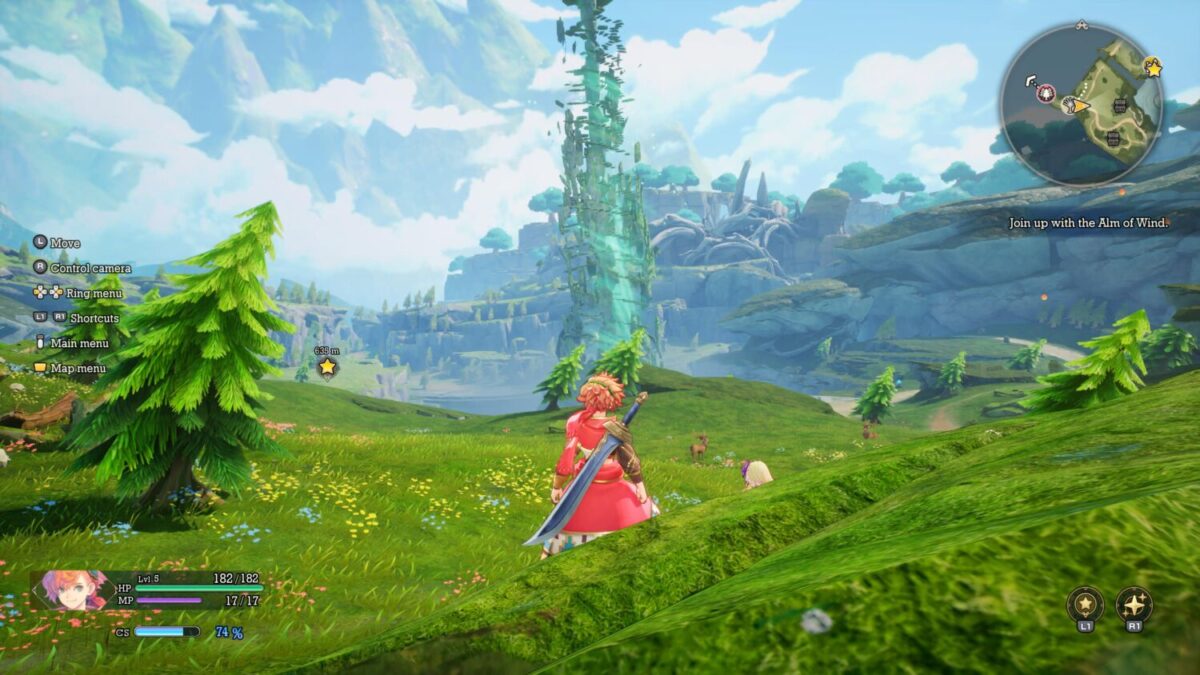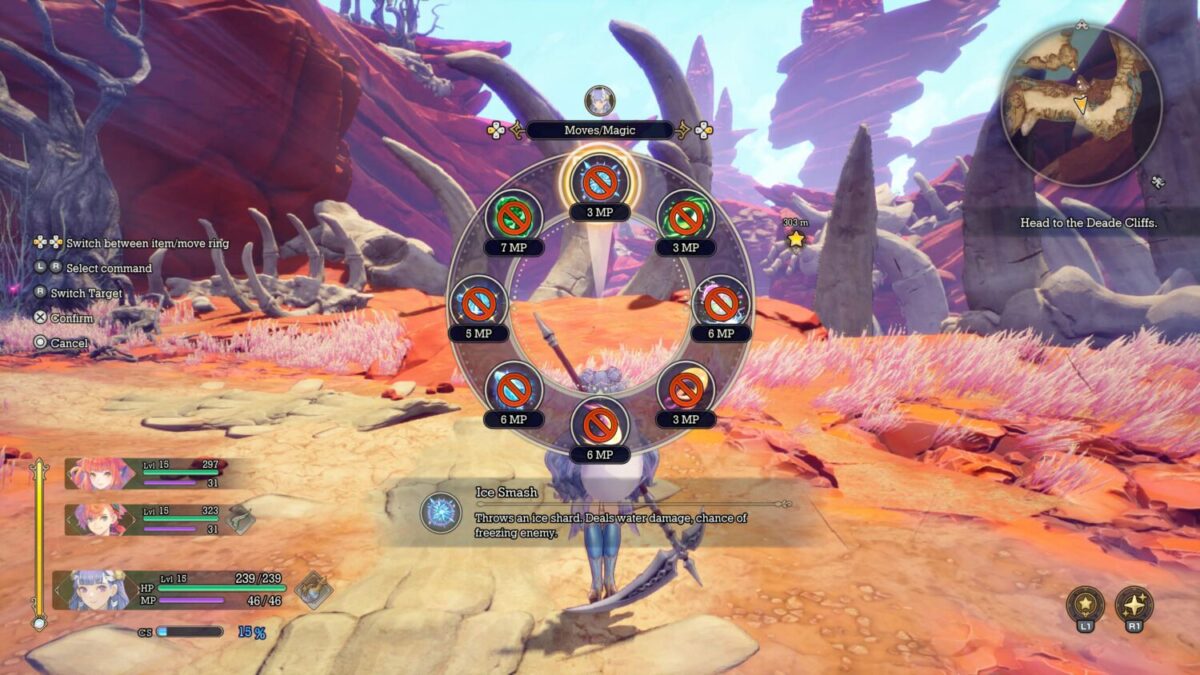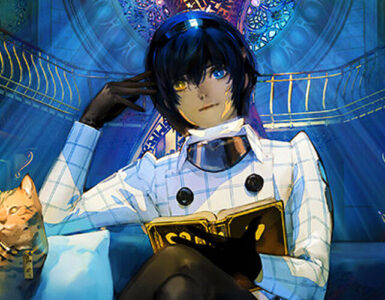Straddling the line between the past and present can be a tricky affair. On the one hand, it’s important to honour one’s roots; on the other, modern day expectations call for some tweaks to the formula. Coming back to the fold after 15-or-so years, Ouka Studios’ Visions of Mana sets out to bring a new shine to a classic Japanese role-playing game (JRPG), rising to the perennial challenge of finding the sweet spot.

The latest mainline entry doesn’t quite land the balancing act, hindering a full return to form. There are moments where it stumbles, occasions that accentuate its dated flair, and lull periods turned into unwelcome padding. But when it breaks free of overgrown roots, the long-awaited adventure delivers an enjoyable time, with standout mastery over gameplay customisation and versatility. There are high hopes riding on this rise from the ashes, and the 40-hour-or-so journey ultimately proves inadequate to carry the weight.
Similar to the Final Fantasy franchise, each Mana game is a standalone experience that doesn’t require prior understanding of the series. Here, the Square Enix-published title follows a group of magical “alms” – village residents chosen by elemental Faeries – and their guardian Val on a pilgrimage to restore the flow of the Mana Tree, an enchanted tree whose energies sustain the world.
It’s a straightforward narrative that treads familiar ground, packing the ingredients of a typical hero’s journey. There are allies to gather, enemies to defeat, and tribulations to overcome that pave the way for character growth – usually Val; other times, the side companions. While some may find the simplicity at odds with the lore-rich JRPG tradition, it works to the game’s favour here, allowing for an easy grasp of events, comfortably breezy pacing, and natural progression.

Strange, then, that the latter half derails from a properly cobbled path. As predictable and cliché the beginning chunk is, the allure and desire to see further developments unfold still lingers in the air. Past the turning point, however, Visions of Mana paints a different image, with languishing cadence, overstuffed exposition, and unnecessary filler – complete with multiple backtracking instances, to boot – causing the momentum to fizzle out quickly. The emotional payoff at the end does compensate for some of the frustration, although it’s too little, too late by then.
The characters are also a mixed bag. With an ensemble cast, a common issue is uneven development and attention, which extends to the supporting lineup. Alongside Val, the title introduces six other members: Hiina, the warrior’s best friend; Morley, a cat-man who seeks to overcome his past trauma; Careena, a half-human, half-dragon accompanied by a flying beast called Ramcoh; Palamena, Queen of Illystana; and the sproutling Julei.

In fact, Val is rather one-dimensional himself. Despite brief moments of soul-searching and overcoming self-doubt, his growth remains superficial from start to end, making it difficult for players to form a genuine connection with him – even more so when he falls for glaringly obvious traps as the narrative progresses. Instead, Morley and to a lesser extent, Palamena, are more fleshed out depictions, with the former’s backstory and the princess’ reversal of conventional norms adding a touch of individuality. Each characterisation is distinct enough, but group dynamics are often tame due to the lack of diverse personalities, even during interactive bits that spring up while exploring the world. It’s an inherent quality, stemming from the party’s shared goal to do and be good, a faithful series staple.
Spanning various environments, Visions of Mana is a journey through vast grassy fields, snowy tundras, acrid deserts, and more, separated by regions. The locales bear their own signature flair, starkly standing out from one another with different monsters, landscapes and traversal mechanics that will unlock as part of the main story. Activating a water-element apparatus, for instance, reveals floating bubbles used for upward travel, whereas a moon-infused contraception slows time down. Other elemental vessels work in a similar vein, spicing up exploration beyond sprinting and double jumping. Fancy controlling a giant automaton? Here’s your chance.

Eschewing the open-world formula for a more traditional approach, the game keeps free-roaming to a confined space, where players can ride their adorable Pikul mount to get from one place to another, or select a fast travel point on the map. The linearity is a double-edged sword: while bloated content won’t be a concern here, the invisible wall (a boundary that limits where one can go in certain areas but doesn’t appear as a physical obstacle) can throw off spatial judgment, especially when locating treasures or interactive points.

In town, players are able to pick up side quests, stock up on their consumables and gear, and exchange Ability Seeds – obtained by defeating various enemies, including elite foes – for new skills or buffs. These bustling activity hubs are usually lively and brim with plenty of energy, so it’s a pity that both NPC and environment interactions are few and far between. The options for equipment purchase and miscellaneous offerings also grow more limited as players progress, offering little reason for them to swing by after a certain point.
Side quests, as expected, suffer from the genre-wide issue of being repetitive and trifling. Barring one long-running chain that involves finding scenic points based on paintings, completion boils down to fighting enemy mobs or collecting specific items out in the open. Do note that there’s no option to track multiple quests, and that the objective marker for the latter activity type can be a little unintuitive and difficult to spot.
Still, there’s a silver lining amid the quibbles. Visions of Mana is a beautifully crafted world that oozes polished charm and robust verve, presented through breathtaking scenery and deftly-shaped 3D models. From the majestic waterfalls of Illystana to lush forest settings, the fantasy world presents no shortage of gorgeous sights to soak up.

Combat is where the game shows its age, despite the seamless blend of modern and returning elements. Slicing and dicing enemies feels dynamic and stiff in the same breath, with smooth animation flowing into clumsy follow-through movements. Input lag is a common occurrence, and while aerial combos allow for some battling flexibility, the execution is sometimes unresponsive and doesn’t pack the expected oomph. It certainly doesn’t help that the third-person camera swings wildly at times, resulting in unreliable auto-targeting and difficult-to-follow action when things pick up on the battlefield. Notably, the issue of visual clutter isn’t exclusive to Visions of Mana, but there are other RPG contemporaries that have pulled off a cleaner look.
At first glance, the mechanics appear straightforward and easy to understand. There are standard and special attacks to chain, dodge and jump controls, moves and spells like shurikens and fire-imbued sword swings that are effective against enemy vulnerabilities, and a Class Strike gauge, which deals massive damage when unleashed. Three characters make up the active party, and players can freely switch out any member outside of combat, including Val. Just a quick heads-up: combat may feel flat and restrictive in the first few hours of gameplay, so be ready to work through the slog.
More options open up as the narrative unfolds, and it’s here that enjoyment levels start to rise. The game has found a valuable gem in versatile customisation, encouraging players to mix-and-match their loadouts and build a system that best suits their individual play style. In Visions of Mana, character classes are tied to Elemental Vessels, each with its own special ability – where the wind-infused Sylphid Boomerang dishes out damage to enemies bound and suspended in mid-air, for instance, the Undine Flask blasts them with a powerful stream of water.

Naturally, there’s a catch. A vessel’s core function will not change, but only one character can equip a particular type at a time, unlocking movesets, abilities, and roles that are unique to them. To illustrate, the Undine Flask transforms Val into a Duelist who wields a Great Sword instead of his standard sword, while Careena takes on the title of Dragon Master. Each class sports a different design, some better than others, and offers three different weapon types.
As with most RPGs, Elemental Points (EPs) are needed to unlock skills and passive abilities on the Elemental Plot, an upgrade system that grants access to permanent moves regardless of the class. The flexibility to toy around with different combinations is a neat little touch, serving as a fresh breath of air from genre conventions. Call it cheesy, but there’s also silly pleasure in watching each character’s costume transformation cutscenes, triggered when an Elemental Vessel is equipped to them for the first time.

Be sure not to get too comfortable with a particular build, though. While Visions of Mana doesn’t explicitly incentivise players to branch out, there are boss fights that will necessitate tweaks to the formula, especially during the later parts of the game. The AI companions aren’t the most reliable in battle, either, so it’s important to optimise their loadouts to maximise survival.
Introducing more depth into gameplay are Ability Seeds, which unlock passive bonuses or new moves that a character doesn’t have access to on their Elemental Plot. All of these capabilities can be assigned to four quick access keys, although Mana veterans may prefer to use the series’ signature ring menu instead. There’s certainly a lot to like about the flexible class and skill system, even if re-scrambling existing loadouts proves to be hard work without an option to save or load presets, which promises a multi-layered experience beyond just button mashing.

Through it all, Visions of Mana registered a few major framerate drops in performance mode on the PlayStation 5, and will likely receive some patchwork soon. It’s rough around the edges, lacking narrative finesse and polish in other areas like pacing and side content variety. When the fantasy epic blooms, however, a glimpse of its potential peeks through, carving out an optimistic future rooted in delightful customisation and spiffy aesthetics. Iron out some of the antiquated kinks, and perhaps a return to form would be in order.
GEEK REVIEW SCORE
Summary
Occupying an awkward space between reinventing the wheel and honouring its roots, Visions of Mana marks a promising, albeit erratic start to rejuvenating a long-dormant adventure by marrying enjoyable, versatile customisation with visual glory.
Overall
7.5/10-
Gameplay - 8/10
8/10
-
Story - 7/10
7/10
-
Presentation - 8/10
8/10
-
Value - 7/10
7/10
-
Geek Satisfaction - 7.5/10
7.5/10













